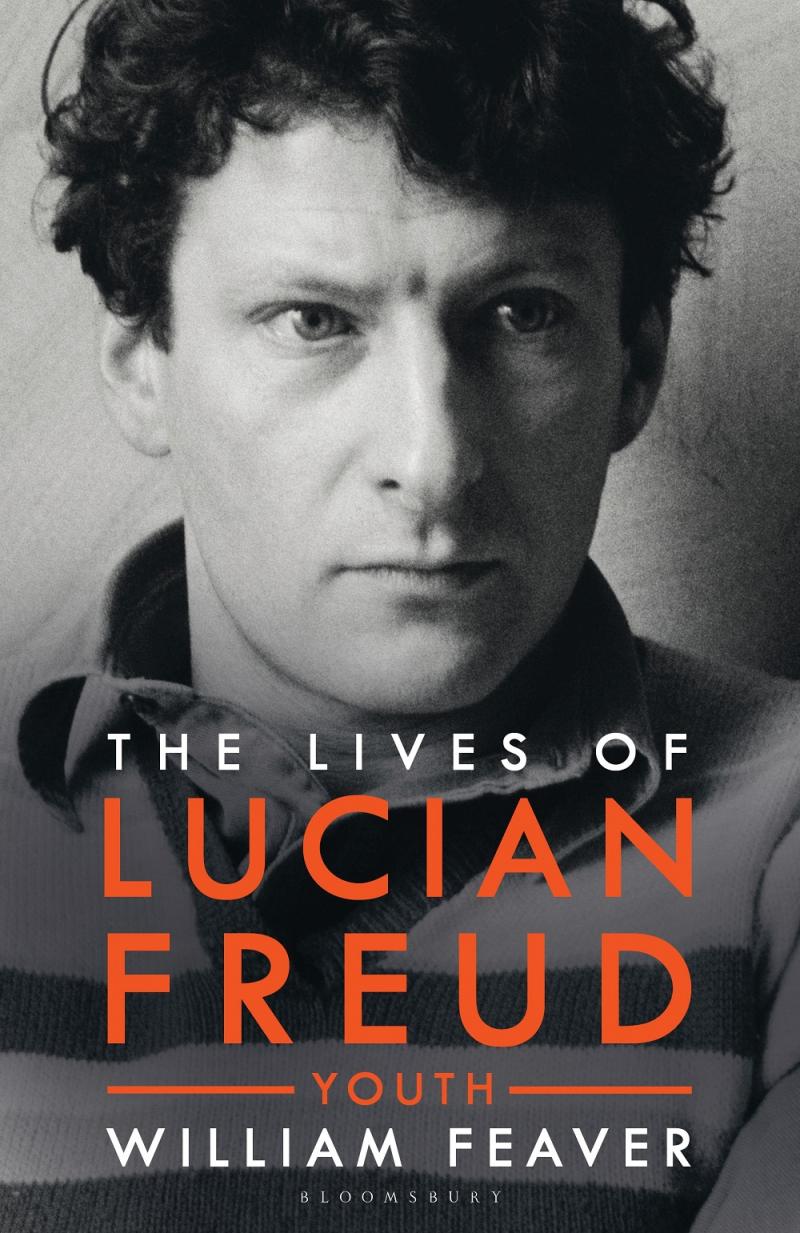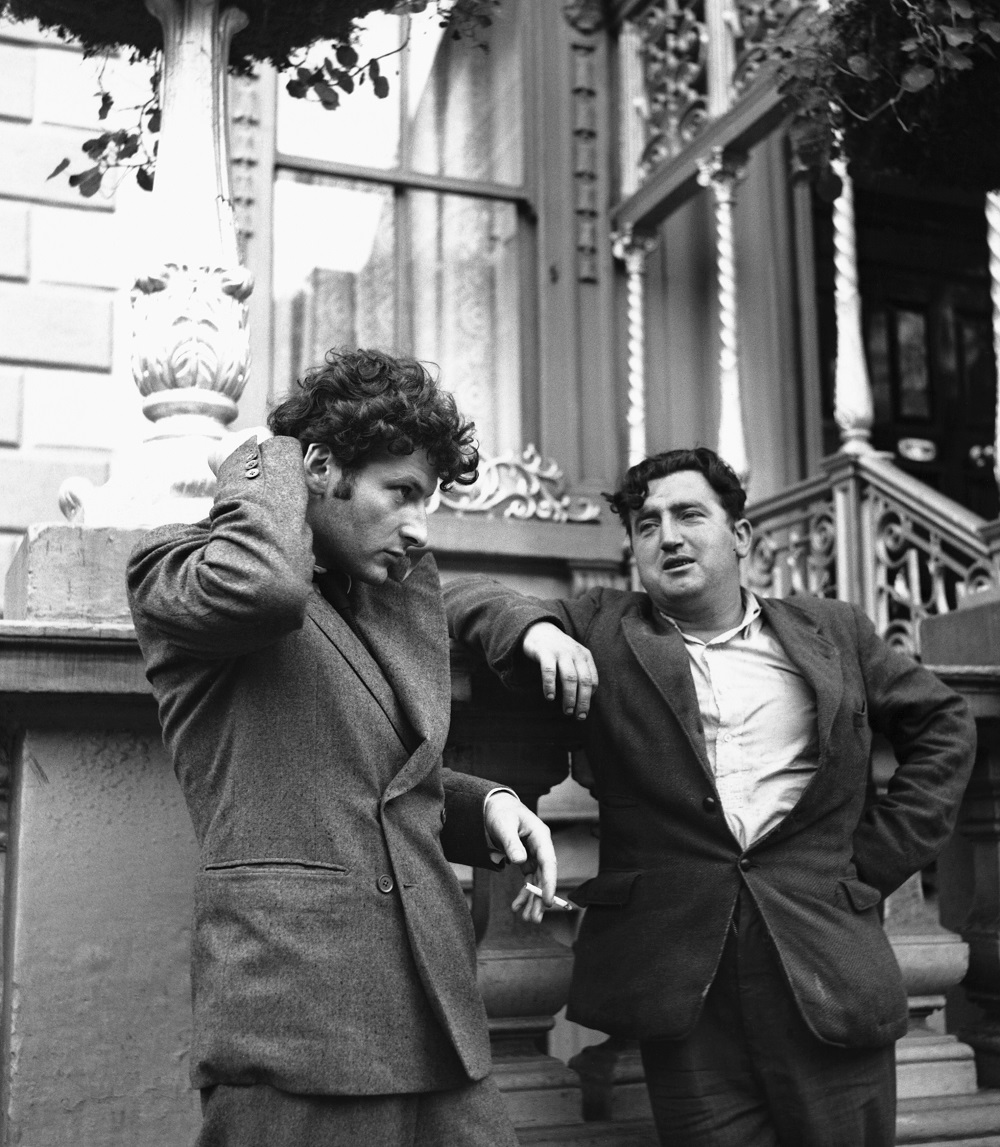William Feaver: The Lives of Lucian Freud: Youth 1922-1968 review - a testament of friendship | reviews, news & interviews
William Feaver: The Lives of Lucian Freud: Youth 1922-1968 review - a testament of friendship
William Feaver: The Lives of Lucian Freud: Youth 1922-1968 review - a testament of friendship
The artist's voice dominates in volume one of the much-anticipated biography

Lucian Freud was never an entirely willing subject, but his remark to William Feaver that his biography would be “the first funny art book”, now seems more astute than throwaway.
This first volume of two takes us to 1968 and its physical heft reflects the scale of the project, which began in 1973 when the critic and author Wiliam Feaver met Freud to interview him for the Sunday Times Magazine. It turned out that Feaver was not the first writer to have been given the assignment, but where his predecessor had been sent away empty handed, Feaver not only got his interview, but struck up a friendship that would last until Freud’s death in 2011.
 Though Freud had no telephone until the late 1970s - and even then Feaver was never vouchsafed his number – this was quickly established as the principle means of communication, with Freud presumably begging friends and acquaintances for the use of their phone. Eventually, their conversations took place almost daily, with Feaver’s notes forming the basis of the book.
Though Freud had no telephone until the late 1970s - and even then Feaver was never vouchsafed his number – this was quickly established as the principle means of communication, with Freud presumably begging friends and acquaintances for the use of their phone. Eventually, their conversations took place almost daily, with Feaver’s notes forming the basis of the book.
The book retains a conversational tone, and the narrative is propelled along by a steady flow of anecdote and gossip, and surprisingly little direct discussion of painting (Pictured above right: Freud and Brendan Behan in Dublin, 1953). Freud’s own words provide a solid enough scaffold, but they give the book the easy appeal of collected letters, which can be dipped in and out of just as well as read sequentially.
The strength of Feaver’s primary source means that often his own words amount to little more than connective tissue. Curiously, though the book evokes very well the intimacy between the two friends, the dominance of Freud’s voice is total, with Feaver himself suspending judgement as he retreats behind the authority of his subject’s own words.
Difficult territory has to be negotiated regardless, and Freud’s notorious selfishness, and casual treatment of women comes up fairly regularly, reflecting, presumably, the natural bias of his conversation. When things get sticky, Feaver all but disappears from view, and the few interjections that he does make seem, consequently, all the more significant.
Freud’s former lover Ann Dunn talks of his controlling nature with devastating understatement, saying that “if one had perhaps been victimised in one’s childhood Lucian was quite productive at bringing that out”. But the force is taken out of her remark by Feaver, who prefaces Dunn’s judgement with a softening sentence, framing his bullying as “a perhaps compulsive desire to have the upper hand.”
This is a book that only exists because of a constant and deep friendshipOne senses in such moments a tension between the author’s loyalty to his friend and his desire to give a balanced account. Freud was evidently resistant to the idea of a biography, preferring instead to refer to Feaver’s book as “a novel” that would appear after his death. It’s intriguing to imagine that the absence of analyis is an inevitable consequence of Freud’s immediate ancestry, but one never gets the sense of Feaver really tackling his subject on anything.
If it were a run of the mill biography, this would be a fatal flaw. But this is a book that only exists because of a constant and deep friendship, and as such it is a record of far more than the life of an individual artist. It tells of Freud, but it tells too of life among a particular milieu in the first half of the 20th century. It probably tells us quite a lot about the author, and it certainly tells us about the peculiar relationship between a writer and an artist, a biographer and his subject.
Published almost concurrently by Prestel, the Lucian Freud Herbarium is no less revealing, bringing together the artist's paintings and drawings of plants. Plants are often a prominent feature of Freud's portraits - who could forget the monstrously present yucca plant in Interior in Paddington, 1951? But the most interesting works in this book are essentially studies, like the Still-life with Aloe, an oil painting from 1949. Here a herring lies next to an uprooted aloe vera plant: each tinged with green, the formal similarities between them are astonishing. And the herring is so much more dead than the plant, which raises itself slightly in a final bid for life. It's a painting that allows us to access some insight into the quality and nature of Lucian Freud's looking, and through it to find pathos and subtlety in his portraits.
- The Lives of Lucian Freud: Youth 1922-1968 by William Feaver (Bloomsbury Publishing £35)
- Lucian Freud Herbarium by Giovanni Aloi (Prestel £39)
The future of Arts Journalism
You can stop theartsdesk.com closing!
We urgently need financing to survive. Our fundraising drive has thus far raised £49,000 but we need to reach £100,000 or we will be forced to close. Please contribute here: https://gofund.me/c3f6033d
And if you can forward this information to anyone who might assist, we’d be grateful.

Subscribe to theartsdesk.com
Thank you for continuing to read our work on theartsdesk.com. For unlimited access to every article in its entirety, including our archive of more than 15,000 pieces, we're asking for £5 per month or £40 per year. We feel it's a very good deal, and hope you do too.
To take a subscription now simply click here.
And if you're looking for that extra gift for a friend or family member, why not treat them to a theartsdesk.com gift subscription?
more Books
 'We are bowled over!' Thank you for your messages of love and support
Much-appreciated words of commendation from readers and the cultural community
'We are bowled over!' Thank you for your messages of love and support
Much-appreciated words of commendation from readers and the cultural community
 Thomas Pynchon - Shadow Ticket review - pulp diction
Thomas Pynchon's latest (and possibly last) book is fun - for a while
Thomas Pynchon - Shadow Ticket review - pulp diction
Thomas Pynchon's latest (and possibly last) book is fun - for a while
 Justin Lewis: Into the Groove review - fun and fact-filled trip through Eighties pop
Month by month journey through a decade gives insights into ordinary people’s lives
Justin Lewis: Into the Groove review - fun and fact-filled trip through Eighties pop
Month by month journey through a decade gives insights into ordinary people’s lives
 Joanna Pocock: Greyhound review - on the road again
A writer retraces her steps to furrow a deeper path through modern America
Joanna Pocock: Greyhound review - on the road again
A writer retraces her steps to furrow a deeper path through modern America
 Mark Hussey: Mrs Dalloway - Biography of a Novel review - echoes across crises
On the centenary of the work's publication an insightful book shows its prescience
Mark Hussey: Mrs Dalloway - Biography of a Novel review - echoes across crises
On the centenary of the work's publication an insightful book shows its prescience
 Frances Wilson: Electric Spark - The Enigma of Muriel Spark review - the matter of fact
Frances Wilson employs her full artistic power to keep pace with Spark’s fantastic and fugitive life
Frances Wilson: Electric Spark - The Enigma of Muriel Spark review - the matter of fact
Frances Wilson employs her full artistic power to keep pace with Spark’s fantastic and fugitive life
 Elizabeth Alker: Everything We Do is Music review - Prokofiev goes pop
A compelling journey into a surprising musical kinship
Elizabeth Alker: Everything We Do is Music review - Prokofiev goes pop
A compelling journey into a surprising musical kinship
 Natalia Ginzburg: The City and the House review - a dying art
Dick Davis renders this analogue love-letter in polyphonic English
Natalia Ginzburg: The City and the House review - a dying art
Dick Davis renders this analogue love-letter in polyphonic English
 Tom Raworth: Cancer review - truthfulness
A 'lost' book reconfirms Raworth’s legacy as one of the great lyric poets
Tom Raworth: Cancer review - truthfulness
A 'lost' book reconfirms Raworth’s legacy as one of the great lyric poets
 Ian Leslie: John and Paul - A Love Story in Songs review - help!
Ian Leslie loses himself in amateur psychology, and fatally misreads The Beatles
Ian Leslie: John and Paul - A Love Story in Songs review - help!
Ian Leslie loses himself in amateur psychology, and fatally misreads The Beatles
 Samuel Arbesman: The Magic of Code review - the spark ages
A wide-eyed take on our digital world can’t quite dispel the dangers
Samuel Arbesman: The Magic of Code review - the spark ages
A wide-eyed take on our digital world can’t quite dispel the dangers
 Zsuzsanna Gahse: Mountainish review - seeking refuge
Notes on danger and dialogue in the shadow of the Swiss Alps
Zsuzsanna Gahse: Mountainish review - seeking refuge
Notes on danger and dialogue in the shadow of the Swiss Alps

Add comment